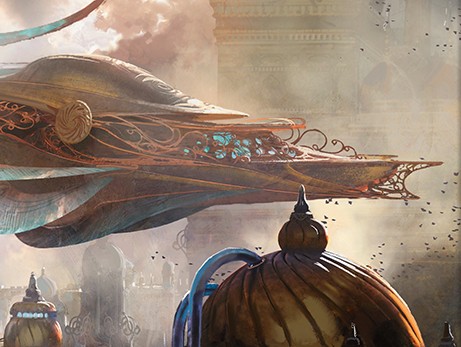2018 marks the start of a lot of changes for Magic the Gathering, and Challenger decks sit at the forefront of some of the biggest ones.
If these Challenger decks are any indication, these changes are definitely for the better. Replacing Duel Decks, which started to lose their taste after Wizards stopped including Planeswalkers in them, Challenger Decks fill the same role in a different way. Where Duel Decks served as an introduction to Magic as a whole with two decks that could be played one against the other out of the box, Challenger decks serve as a primer for competitive Standard play. Something which might serve a purpose outside of introducing people new to Magic to a format.
While this may be great for the anxious newbie to fly into competitive Standard with a set of training wheels, it also serves to make getting some of the harder to find or more expensive cards much easier for seasoned players. It also gives seasoned players in other formats, especially Commander, a way to get cards they normally wouldn't otherwise bother with, or at least wouldn't go out of their way for. And even if you just want to copy and paste your way into FNM, these upcoming preconstructed decks will bolster your introduction to the scene.
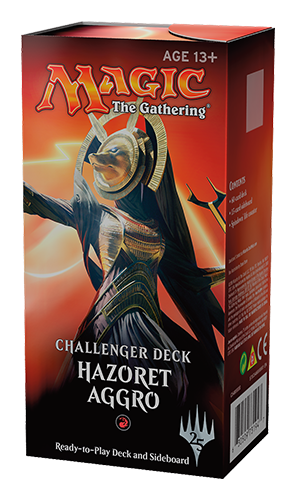
Hazoret Aggro serves as the main highlight of this entire line of decks, providing you with two of the larger cards in Mono-Red Aggro in competitive play. Specifically Hazoret the Fervent and Chandra, Torch of Defiance. Both cards that, in their prime, would almost outweigh the cost of the entire deck alone. They're heavy hitters, and you'll only need to bolster this deck a little in order to start taking on your local meta.
So let's take a look at the deck list and see where it's going:
[one_fourth responsive="Stack"]
[/one_fourth]
[one_fourth responsive="Stack"]
[/one_fourth]
[one_fourth responsive="Stack"]
[/one_fourth]
[one_fourth_last responsive="Stack"]
[/one_fourth_last]
This deck's all-stars are Chandra, Torch of Defiance, almost all of whose abilities are deadly if allowed to resolve, and Hazoret the Fervent for the fact that she's a huge body who can activate almost as soon as you play her, and who burns for discard as well. You also get a lot of work out of Glorybringer being your curve topper, and Harsh Mentor and Bomat Courier both put in some serious work on the side. Everything else just helps you bring the pain, and bring it as quickly as possible.
Most spells come in at under three mana, so you're looking at emptying your hand and constantly hammering your opponent into submission before they even have a chance to blink. The only thing that keeps this deck from being absolutely dominating is that it's missing additional copies of your hard hitters and has a little bit of filler.
Hazoret Aggro probably has me the most excited because it's the closest I'll get to obtaining Chandra at an entry-level price for some time, and it will allow me to replace a Hazoret that I ended up selling some time ago when the price topped out. If you or your friends love aggro and want to try Standard, this is the deck to get. Even if you don't know what to pick up, this is still a great suggestion.
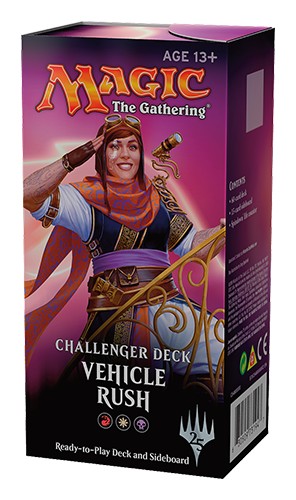
Vehicle Rush serves as the introduction to a deck that always played second fiddle to the top decks at a lot of events, and was often the fall back that dominated whenever a banning happened in this rotation and the last. In this weird Vehicle Dwarf tribal setup, you play a kind of mid-range game where you plan on going big and long with your vehicles for big damage.
While there are no real standout, "Holy moly, I can't believe they included that!" cards in this deck, there are a lot of nice check lands and nonbasic lands. Plus it's just as close to being competitive as the Hazoret deck is, only needing a little bit of work to raise up.
The only glaring problem that I have is the fact that while you may be able to get Heart of Kiran online and use it quite effectively, you'd probably get way more value from something like Hope of Ghirapur. Especially since this deck is without a Planeswalker.
This, to me, was kind of a dumb decision when the obvious choice to make this deck more exciting right out of the box was staring them in the face. Hope of Ghirapur isn't even 1/5th of the price either, so I'm not sure why they included Heart of Kiran without intending the player to go out and buy a Planeswalker. The obvious choice here being Gideon of the Trials.
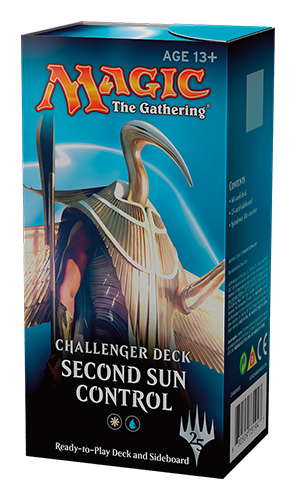
Second Sun Control is one of those decks with a very definite win condition that bides their time until they can lay it out. With some changes in the meta, Approach has leaned further towards Esper than Azorious, but Azorius Approach has gotten a lot of attention in the competitive meta and this deck stands as a great introduction for your basic Control player looking to break into Standard.
The whole goal of a deck like this is to either mulligan or draw your way into Approach of the Second Sun, cast it as quickly as possible, then draw and cast it again, all while holding your opponent off with a variety of creature removal, counters, and board control cards.
[one_fourth responsive="Stack"]
[/one_fourth]
[one_fourth responsive="Stack"]
[/one_fourth]
[one_fourth responsive="Stack"]
[/one_fourth]
[one_fourth_last responsive="Stack"]
[/one_fourth_last]
While there's no shock value to be had with this deck, unlike the previous two, there is a decent control package. However, I feel that it suffers under the weight of trying to do too much with cards that aren't efficient at doing their job in a format that has a lot of focus. That's why the deck is better in an Esper form in my opinion, since splashing black opens up better removal options with cards like Vraska's Contempt, Fatal Push, and Walk the Plank.
I still support the use of this deck though. It serves as a decent introduction to control, and gets people talking a little bit about Field of Ruin. Which is something that should be happening no matter what.
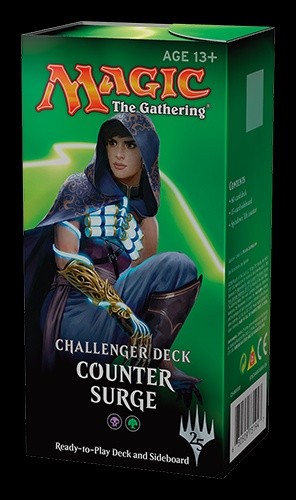
The inclusion of Counter Surge as a deck took me by surprise, just like what happens when I encounter the one or two players that play this deck style at events. While not a hugely surprising filler deck, there are a few inclusions here that even seasoned players might be taking notice of.
This is a pretty weird deck in that while it has a focus on placing counters on creatures and swinging big in a straightforward manner, there's a lot of surprising tech going on here. I think that's why this deck, or a deck like it at least, always takes a spot at every big event. There's a lot here that people simply don't sideboard for. It's really an opportunity for those people who would rather be creative with their decks as opposed to just taking their local FNM with a guaranteed copy and paste deck.
[one_fourth responsive="Stack"]
[/one_fourth]
[one_fourth responsive="Stack"]
[/one_fourth]
[one_fourth responsive="Stack"]
[/one_fourth]
[one_fourth_last responsive="Stack"]
[/one_fourth_last]
What blows my mind is the inclusion of Fatal Push. While it's only a one-of, I remember a time when that card would easily ask almost the same price that the entire desk is going for. Toss in a Walking Ballista and this suddenly becomes an interesting deck with a few different avenues that can be massively fun.
Counter Surge may take the most investment and work to make competitive, but in my opinion it's probably the most fun of the bunch whether you play it at a kitchen table match, or an event.
What do you think of the Challenger decks? Will you be picking any of them up? What would you suggest as additions and changes for those looking to adjust? Share your thoughts in the comments!

